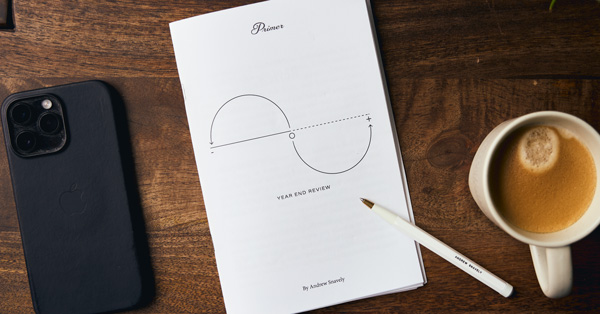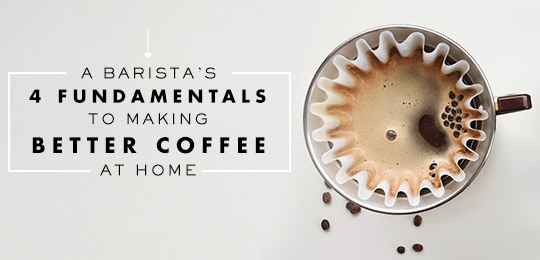In today's trending narrative about fashion, there is an intriguing debate that revolves around the concept of “timeless style.” Is it a reality, or is it a myth? The voices have been growing louder on social media platforms like Reddit, where an increasing number of people argue that the concept of “timeless style” can't exist due to the inherent nature of trends, dismissing it as merely a marketing term attempting to trick customers who yearn to “solve style”. Yet, this contention, however, is mistaken. What they are referring to is “timeless fashion,” which indeed cannot exist due to the transient nature of fashion itself. But style? Personal style can definitely incorporate a “timeless” aspect to it.
Defining Fashion and Style: The Essential Distinction
Before we move forward, let's clarify what we mean by fashion and style. Fashion, fashionable, and fashion trends represents what is happening in clothing from the perspective of the fashion industry, a reflection of what is trending right now, the latest designs, the picks of early adopters, the current and evolving market, and the sub-culture that follows these things with passion.
Style is an individual perspective, a reflection of one's tastes, preferences, and identity. You can have great style and not be fashionable.
Cultural Relevance: Why Do We Wear What We Wear?
And why don't we wear what some other people wear? And why do people from other places wear something else? The answer lies in our relationship with cultural relevance.
Our style choices are influenced by the cultures and sub-cultures we belong to, whether they're based on region, demographic, or interests. A 19-year-old punk rock lover from Portland who adores anime will inherently dress differently than a 32-year-old tech entrepreneur from Florida who is passionate about power lifting. These differences in style, not fashion, are the most powerful expressions of our alignment with the cultures we wish to associate with.
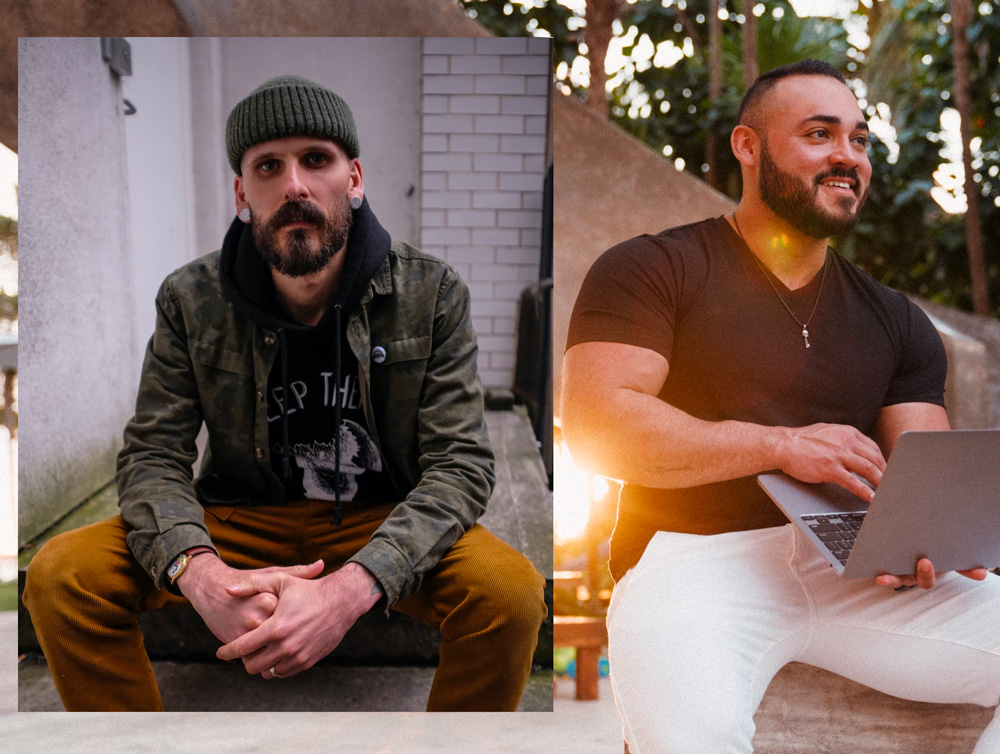
Addressing the Misconception: Being Fashionable vs. Being Stylish
Often, the term “boring” and “safe” is used by trend-focused individuals to describe a style that doesn't conform to the latest fashion. But as a person who dresses this way, I’ve never related to the word boring, as in, if the opposite of boring is “exciting,” because I can’t relate to thinking about my clothing as “exciting.” It’s just not how I look at that part of my life, and to clarify, I’m a guy who is interested in personal style and have run a website that talks about clothing for 15 years.
Instead, I think about my clothing's cultural relevance. Our clothing is more than a covering, it serves as a flag on a ship, communicating a lot about us before we even interact with someone. How does my clothing reflect my identity and values in the cultures I associate with? Does an outfit make me appear competent? Playful or refined? Trend-forward or classic? Invested or disinterested? Socially fluent or oblivious?
Part of being fluent within your social identity is recognizing what items, how they're worn, and how they fit are or are not relevant to the cultures you participate in. And what is considered timeless to one culture or sub-culture may not translate to others. To a man living in Dallas, it would be hard to disagree with his views that western boots have been a consistent part of his region's style. To a man living in New England, boat shoes have been a culturally relevant part of style for 50 years. In other areas, these things would appear less so.
Being fashionable is awesome if you enjoy it and you relate to fashion culture. It is as much a true, distinct, and thriving sub-culture as any other. But if you don't connect with that, that is also fine and you shouldn't feel like there isn't a way to dress well that represents your identity and is culturally relevant.
Knickerbocker pants were the norm in the early 20th century, but they faded away and have never returned to relevance. If you showed up wearing knickers at any point since then, you would look like you were wearing a costume.
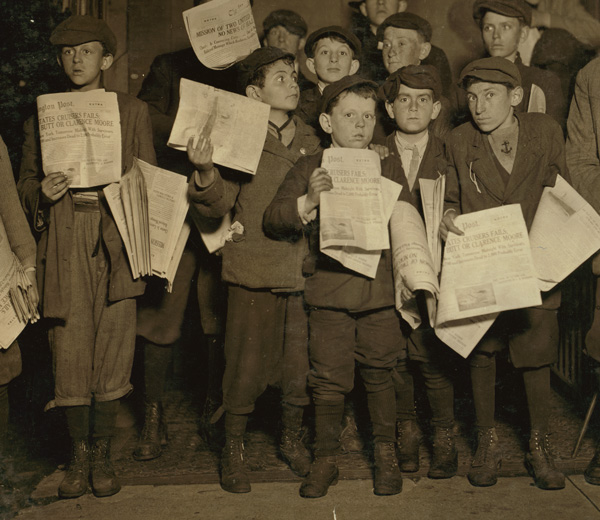
But consider this suited man from 1922: While his suit may not resemble what you would buy at SuitSupply today, a 60 year old man showing up like this in 2023 to a funeral would still fit in and appear culturally appropriate.

Even though suits have had wild fashion trend design swings, from the Zoot suits of the 40s, to the mod suits of the mid-century, the wide lapels of the 70s to the power suits of the 80s, there exists a style of suit that was still culturally relevant throughout that time. It may not have been fashionable but it still could be considered relevant – unlike the knickerbockers.
Style's cultural relevance exists on a spectrum and these two extreme examples serve to illustrate my main point: No style lasts forever; BUT some styles endure as culturally relevant for a very long time.
And because of that I think it is possible for the average person to dress well without changing a whole lot, potentially over the medium term and longer term, if their concern is looking and feeling great within the context of the average American life.
The Lexicon of Fashion: Fads, Micro-Trends, Macro-Trends
It's important to understand fashion trends for this discussion. Fads are fleeting trends, like fireworks, they burst brightly but fade away in one to a few seasons. Micro-trends, as coined in the Reddit post I linked to, have a slightly longer lifespan and can exist within larger trends, ranging from 5 to 10 years, reflecting subtle societal shifts.
Macro-trends are the styles that have endured the passage of time, adapting to societal changes and changing trends while maintaining their essence. The styles that exist within macro-trends are what we are referring to as a “timeless” style – not because an item doesn't evolve or because it will be relevant forever, but because it is not currently identified with a specific time. That is the 1A definition of “timeless” in Webster's dictionary: “not restricted to a particular time or date”.
For example, one such enduring style that has seen its popularity wax and wane over the last 80 years is the Clarks Desert Boot. Its status as a fashionable micro-trend has fluctuated, but that doesn't mean it ever truly fell out of cultural relevance. Even in its off years, wearing a pair of Clarks Desert Boots wouldn't have made you look out of place. It just wouldn't be considered on-trend.
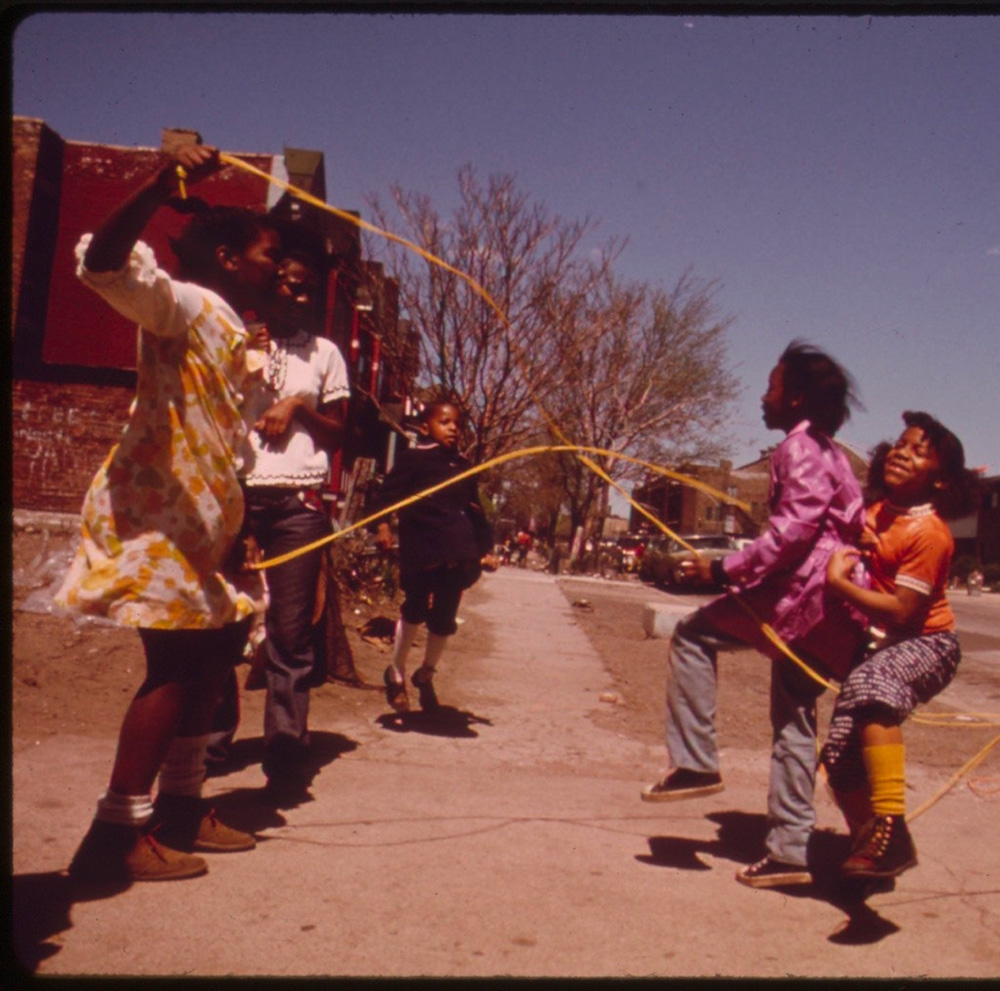
The “Timeless Style” Debate: A Misnomer
The term “timeless style” has recently triggered heated debates, that since people no longer dress how they did in 1900, that this is proof that style can't be timeless. To me, this is a dishonest take, as I never misconstrued items described as “timeless” to be guaranteed to be culturally relevant for 30 or 300 years. Perhaps a more precise phrase would be “enduring style,” or as suggested by one Redditor in response to the thread, “long-lived style.” These are styles that have maintained their cultural relevance for decades, adapting to shifts in cultural preferences and societal norms. They are the macro trends that have been consistent over the years with oscillating periods of fashionability.
For instance, the white button down collar shirt has been worn consistently, in varying fits and ways for almost a century.
While the fit may have changed, the essence of the item has not, and that cannot be overlooked. Plenty of styles, like knickerbockers, the ruffle shirt, and super wide, short ties have appeared and disappeared permanently. It is not the shirt that anchors these looks to their specific times – the shirt's general aesthetic is without a defined time.
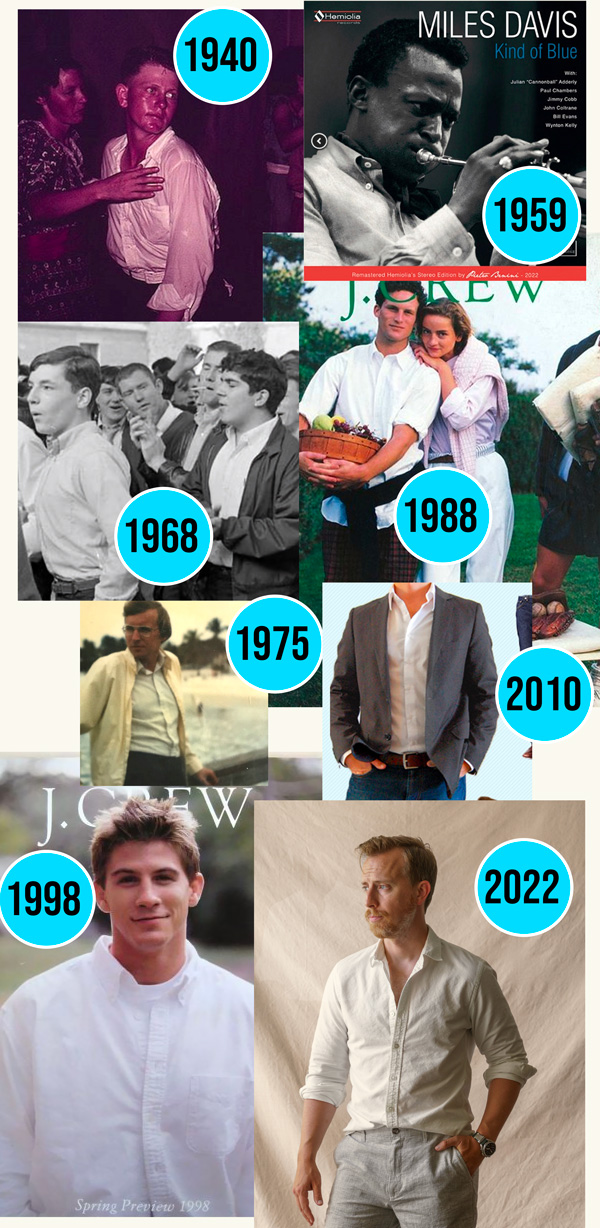
Navigating the Style Spectrum: The Role of Macro-Trends
These enduring macro-trends form the backbone of a style that is flexible enough to adapt to subtle cultural changes, but robust enough not to be swayed by every passing fad.
For example, over the past 80 years or so, while the fads and micro-trends of boots such as toe shapes and sole thickness have continually fluctuated, the macro trends have remained quite consistent.
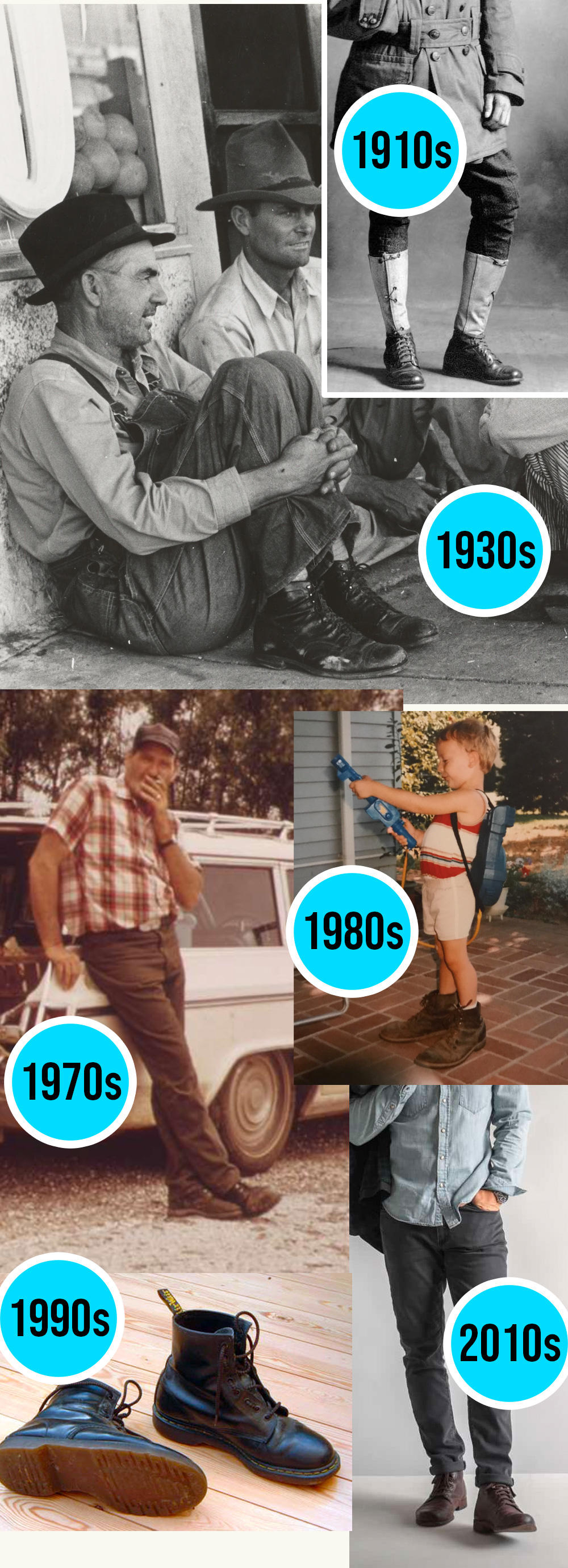
All of the boots look like things my dad also wore in the 70s/80s, the boot silhouettes looks like the Doc Martens I wore in the 90s, and they're obviously similar to Iron Rangers, 1000 Mile Boots, etc. that became mainstream trendy in the 2010s. And within that period, where say, the micro-trend was something different, continuing to wear them didn't make you look akin to wearing a flared leg polyester pant from the 70s.
The key takeaway here is that macro-trends do exist and continue on with only minor variations for a long period, regardless of whether we are sticklers for the word “timeless” or not.
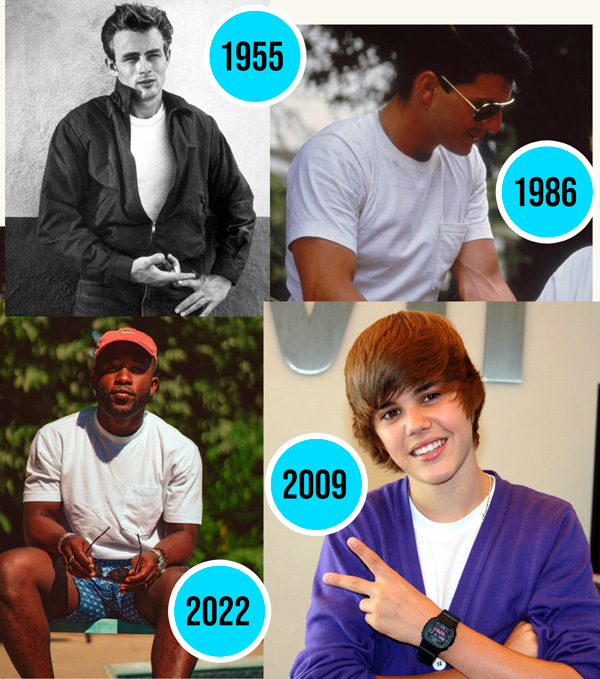
The Intricacies of Enduring Style: Deconstructing the Outfit
While individual articles of clothing may endure through the passage of time, combining them into an outfit that is timeless is a challenge. This is because the devil is in the details. Our personal style, even one that aims to endure, must, like everything in our lives, continue to evolve. Cultures both large and niche inevitably shift, and it's the unique details and fits of individual pieces combined to create an outfit that provide the first clue that a style might not be fulfilling its fundamental function: maintaining cultural relevance.
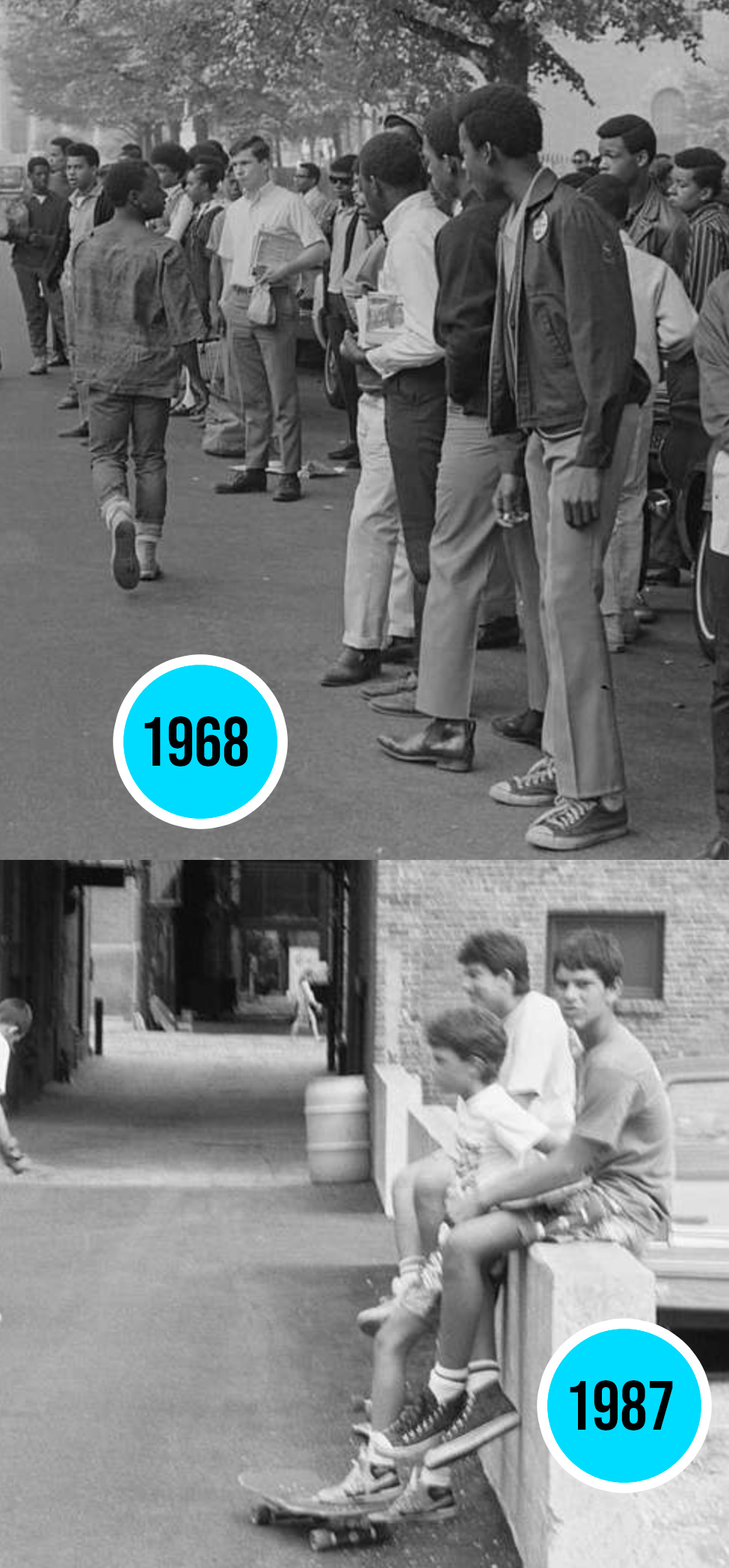
For example, as shown earlier, the iconic Oxford button-down shirt has subtly transformed in its styling and fit over the years, reflecting changing cultural winds. Take for example this 1974 photo of Alan Bennett: it is not the shirt that puts his outfit in the 70s, but what is paired with it. Just ditching the tie makes it tougher to place him in the timeline. It could be the 2010s or the 1950s. Swap his glasses to a different style and give him a different hair style and he could literally be in any decade of the last 90 years.

This nuanced understanding of timeless style reveals that it's not about replicating exact past outfits or having a “set it and forget it” attitude towards your personal style. While the core concept of certain style items, like a white button-down shirt, endures, their designs and fits have evolved. The adaptability of these key pieces to changing cultural norms and personal identities defines their enduring cultural relevance.
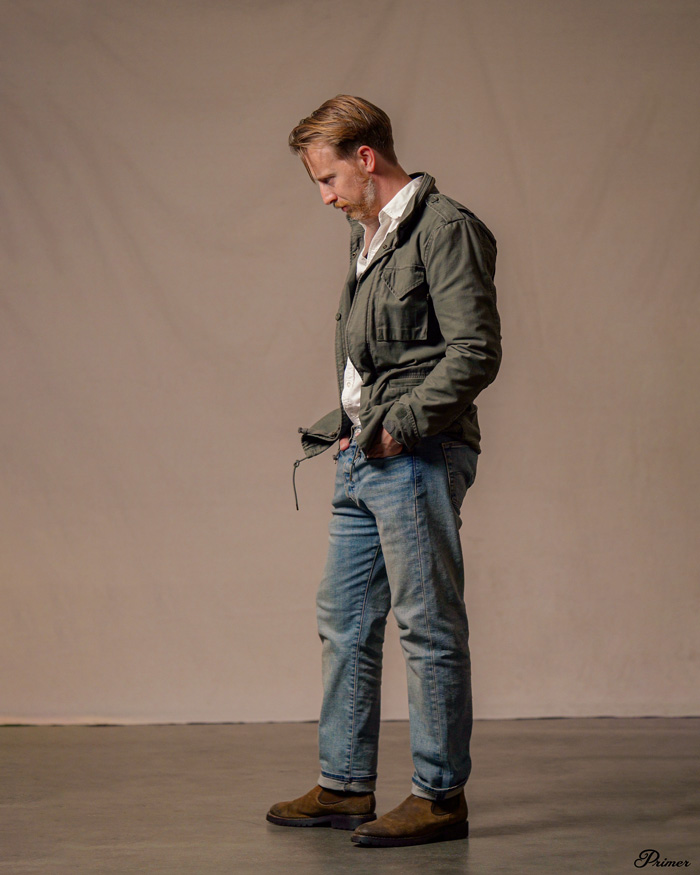
A prime example of this evolving timeless style can be seen in the iconic Levi's 501 jeans. The design and fit of the 501s have subtly shifted to align with cultural preferences while maintaining their purpose as a middle-ground option: not too wide, not too skinny, and rarely fashion-forward. It is this balance of adaptability and consistency that solidifies the 501s' status as a timeless piece, embodying the essence of enduring style.
For more on my thoughts of evolving pant and jean trends, the return of looser fits and how I plan on experimenting with them, check out my previous video:
How Culturally Relevant Style Evolves
So, while the individual concepts of clothing have endured, the culturally relevant ways they have been worn have changed multiple times over. This underscores the fact that even in the pursuit of a timeless style, adaptability is key. Our clothes are statements of who we are and the times we live in.
Adapting Timeless Pieces to Your Personal Style
The act of styling, therefore, is a dynamic interplay between the enduring and the evolving.
Even if you meticulously craft a wardrobe composed entirely of textbook timeless pieces, the truth remains that the way you wear these items should evolve in tandem with your personal journey. This isn't merely a suggestion; it's a fundamental facet of personal style.
Think of your wardrobe as a canvas. The timeless pieces are the backdrop, providing a solid foundation on which to build. But your style—the way you wear these pieces—is the paint that brings the canvas to life. Your style breathes color, texture, and dimension into your timeless wardrobe, transforming it from a static collection of items into a vibrant, living expression of your changing cultural identity.
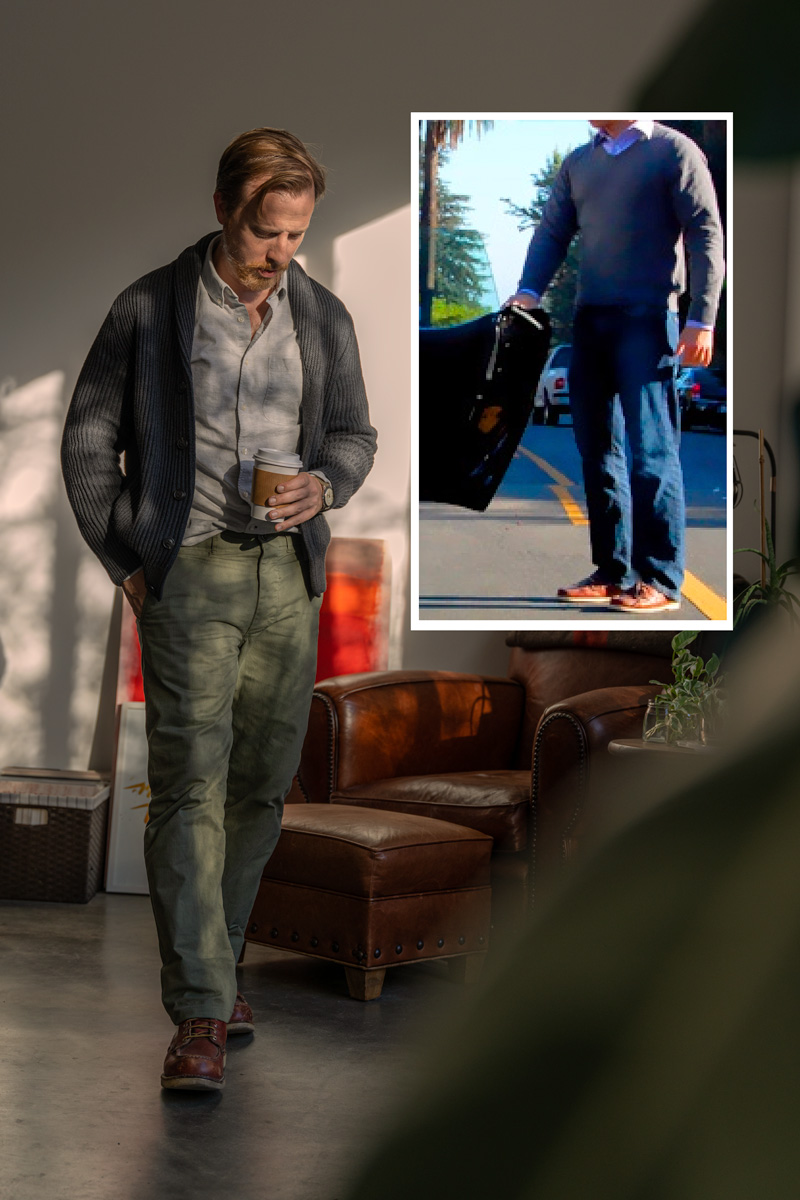
Navigating Life's Phases: Style as a Reflection of Growth
As we journey through life, we grow, we change, we evolve. We encounter new experiences, join new sub-cultures, form new relationships, and forge new paths. All of these experiences shape us, and they will also shape our style. Just as we wouldn't expect to have the same perspectives and preferences at 50 that we had at 20, we shouldn't expect our style to remain static.
Indeed, the most powerful style statement we can make is to allow our look to evolve with us. This doesn't mean discarding our timeless pieces. On the contrary, it means finding new ways to wear them, new combinations to try, and new contexts in which to showcase them.
Actionable Advice for Navigating Enduring Style as a Novice
If you find yourself intrigued by the concept of timeless style and eager to make sense of it in contrast to the cultural pressure surrounding fashion trends, here are some actionable steps to help you on your style journey:
- Explore Your Personal Preferences: Take the time to reflect on your individual tastes, interests, and identity. Consider what resonates with you on a deeper level and what makes you feel confident and authentic. This self-awareness will serve as the foundation for developing your personal style.
- Seek Inspiration, Not Validation: Remember that style is subjective, and there is no one-size-fits-all approach. Seek inspiration from fashion icons, historical figures, or style influencers, but don't feel compelled to conform to their choices. Use their creativity as a springboard to develop your unique style narrative.
- Experiment with Different Styles: Don't be afraid to experiment and step out of your comfort zone. Try on different clothing styles, mix and match various pieces, and explore different aesthetics. Embrace the opportunity to convey your identity through clothing, even if it means stepping away from the latest fashion trends.
- Emphasize Timeless Elements: Look for clothing pieces that have enduring qualities and have withstood the test of time. Classic wardrobe staples such as a well-tailored blazer, a versatile pair of jeans, or a simple white shirt can form the basis of a timeless wardrobe. Focus on quality, fit, and versatility when selecting these foundational pieces.
- Adapt to Cultural Context: While timeless style transcends fleeting trends, it's essential to adapt your style to the cultural context you find yourself in. Observe and appreciate the prevailing fashion sensibilities around you, understanding that cultural relevance can enhance the impact of your personal style. Blend enduring elements with subtle nods to current fashion to create a balanced and culturally aligned look.
- Trust Your Intuition: Ultimately, developing a personal style that feels authentic and resonates with you is about trusting your intuition. Pay attention to what makes you feel comfortable, confident, and true to yourself, and let that guide your style choices.
- Be Open to Evolution: Just as personal growth and experiences shape us, allow your style to evolve alongside you. Embrace the changes in your preferences, cultural influences, and life phases. Adapt your style choices to reflect your growth and embrace the dynamic nature of personal style.
- Enjoy the Journey: Above all, remember that style should be an enjoyable and representative process.
In Conclusion: Embracing the Enduring, Navigating the New
As we conclude, let's revisit the contentious debate around “timeless style.” It is real, but perhaps it's been misnamed. What we're discussing is not the absence of change, but the presence of endurance amidst change. It's not about stagnation; it's about evolution. It's about adapting to the shifts in cultural preferences while holding on to the core elements of our personal style.
The concept of “timeless style” doesn't refute the existence of fashion trends, but rather embraces their cyclical nature. It recognizes that while some styles will come and go with the changing seasons, others will endure, their appeal undiminished by the passage of time.
In the end, the pursuit of timeless style is not about resisting change, but about navigating it with grace and confidence. It's about recognizing the enduring elements in our style and adapting them to our evolving cultural context. It's about celebrating the constancy of change, and the change within constancy. It's not just about fashion, but about self-expression, cultural alignment, and personal authenticity.
What do you think? Chat with me in the comments!



![No, Timeless Style Is Not a Made Up Marketing Term [Essay]](https://www.primermagazine.com/wp-content/uploads/2023/05/timeless-style_wide.jpg)

